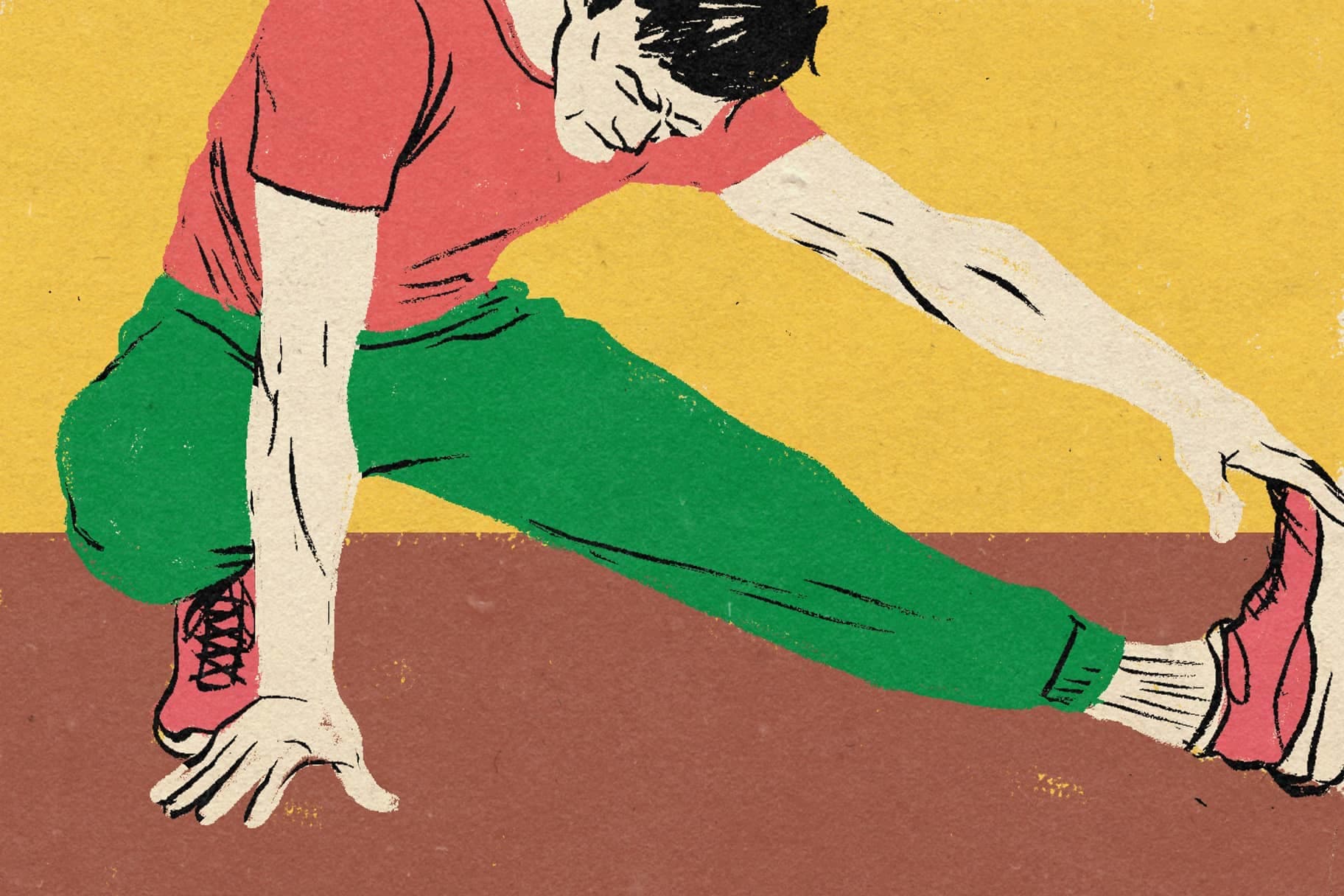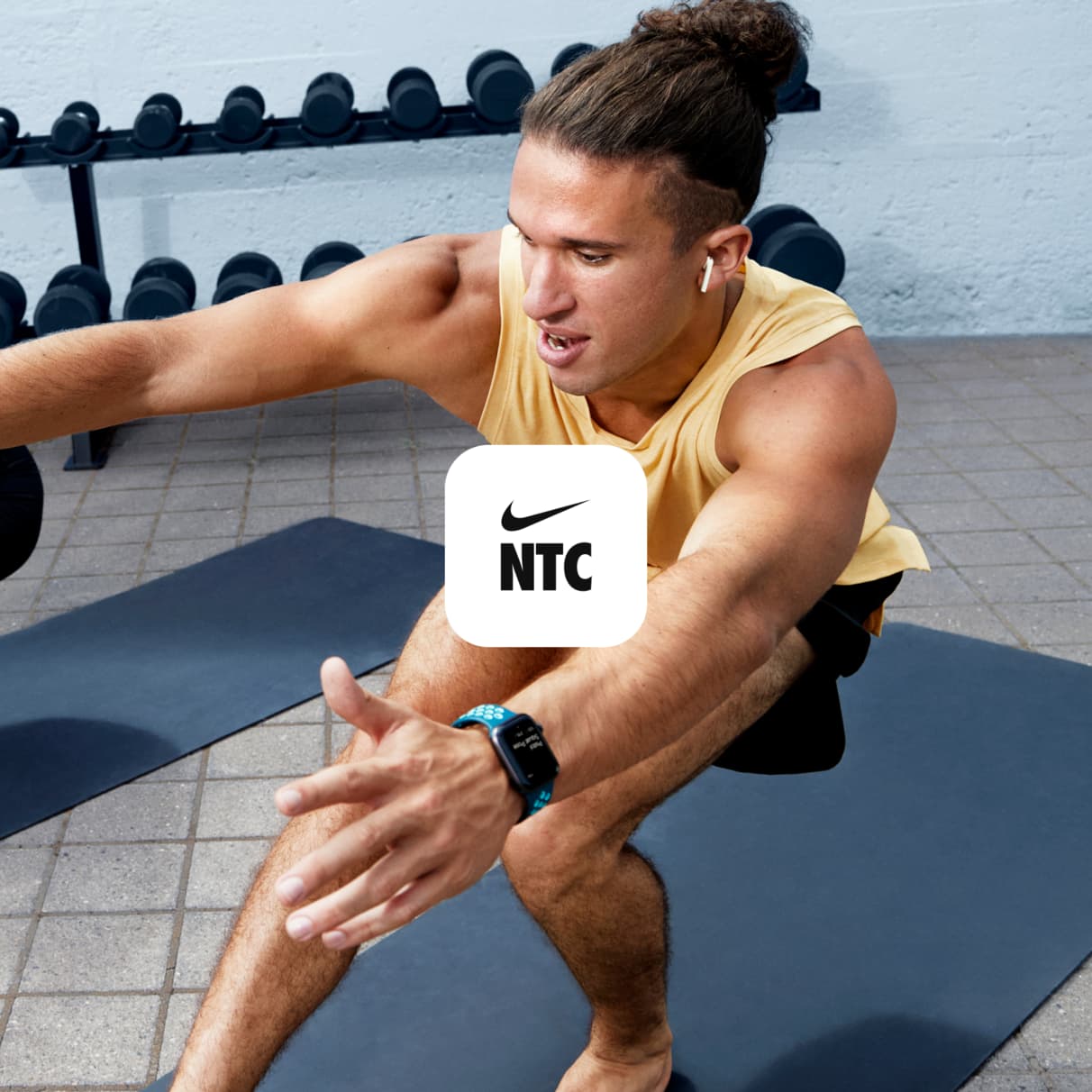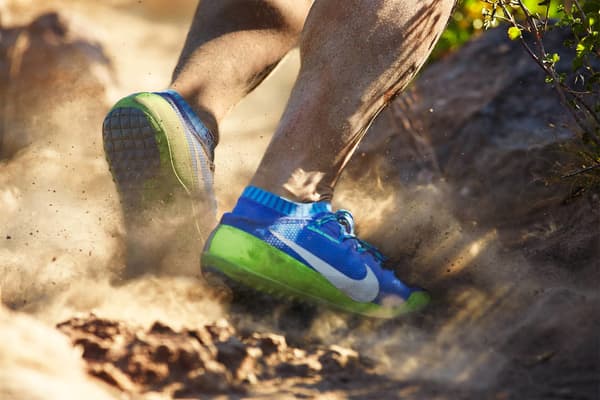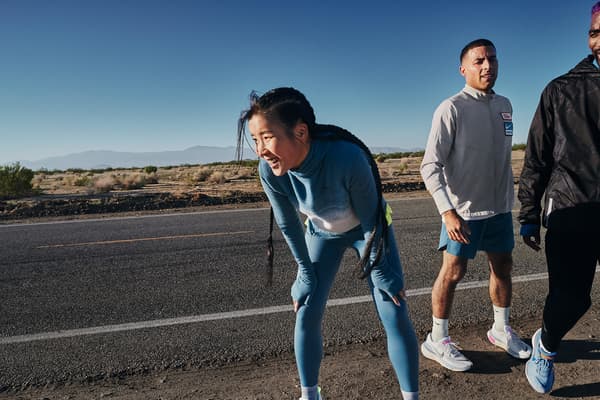Is It Tendonitis or Tendinosis? Here's How To Tell
Health & Wellness
Experts explain the differences between each injury—and what to do if you experience either.

It doesn't matter if you're a runner, weightlifter or tennis player. Repetitive movements are a basic requirement for keeping up with your sport. But, with repetition comes a bit of risk—especially to the tendons, the flexible bands of tissue that connect muscle to bone, which enable the body to move. This is where the tendonitis versus tendinosis concern comes into play.
"Overuse injuries like tendonitis are common among athletes that engage in activities that involve high-velocity movements like jumping and swinging. Things like basketball, gymnastics, golfing, tennis, sprinting and swimming, for example", said Jason Machowsky, CSCS and exercise physiologist. "Injury can also occur with other repetitive activities such as gardening, clicking a mouse and shovelling", he said.
(Related: 5 Unexpected Benefits of Star Jumps, According to Personal Trainers)
"If you've been experiencing tendon pain for a few days or weeks, it might be due to tendonitis. However, if you've been experiencing pain for a few months or more, you may have a related condition called tendinosis", said Sarah Lloyd, DPT, SCS.
According to Lloyd, the way you should treat tendonitis vs. tendinosis varies. So it's important to understand the differences and seek the help of a healthcare professional to ensure you get the right care. Read on to learn more about tendonitis vs. tendinosis, plus how to treat and prevent each.
What Is Tendonitis—And What Causes It?

In the most basic terms, tendonitis is the inflammation of a tendon as a result of injury or overuse. Tendonitis can occur in any tendon, but the shoulders, elbows, wrists, knees and heels are most commonly impacted.
"Tendonitis reflects an acute injury and inflammation to the tendon, typically when the physical demands of an activity exceed the tendons' [ability] to absorb the force", Machowsky said.
Tendonitis might occur for one of two reasons, Lloyd said:
- "A muscular imbalance forces certain muscles to compensate due to weakness in another muscle group, causing strain on the related tendons. For example, someone may develop hip flexor tendonitis if their glutes are weak".
- The muscle, or the tendon, itself is not strong enough to handle the load you are asking it to perform. "For example, runners who perform repetitive single-leg plyometric movements may develop Achilles tendonitis if they don't ramp up their mileage slowly", she said.
(Related: How to Increase Your Running Mileage Without Getting Injured, According to Experts)
Symptoms of Tendonitis and When to See a Doctor
Symptoms of tendonitis may vary from person to person depending on the activity that brought on the pain. According to Machowsky, some major signs of tendonitis include:
- Pain and tenderness along a tendon
- Joint pain
- Stiffness/loss of range of motion
- Swelling
- Weakness
- Pain that intensifies with movement or activity
"Typically, if the pain doesn't go away after a week or so, increases with activity, makes you change your gait or impacts your range of motion, it's a good idea to see a health care provider", Lloyd said.
Lloyd's recommendation to seek medical care should not be taken lightly. Both Lloyd and Machowsky noted that letting tendonitis go untreated could allow the injury to progress to tendinosis, which is more challenging to rehab.
"Typically, the earlier you seek treatment for tendon issues, the better and quicker your return to activity will be", Lloyd said.
How To Prevent and Treat Tendonitis

Unfortunately, there is no fail-proof way to prevent tendonitis. However, there are some things you can do to decrease your risk of developing it, Lloyd explained.
"For example, if you're new to a certain activity, progressing slowly will allow your muscles and tendons to adapt, which helps ward off injury. If you're new to running, for example, you'll want to increase in mileage and pace slowly", she said.
Machowsky also stressed the importance of warming up before working out to get ready for movement.
(Related: How To Start Running [or Get Back Into It After a Long Break])
"You should also check your posture and ergonomic setups for non-sport-related repetitive activities that could possibly be straining tendons", Machowsky said. For example, to help prevent tendonitis in your wrists from typing, you may need to utilise a wrist pad to ensure your hands are level with the keyboard, per Northwell Health.
In terms of treating tendonitis, rest and decreasing inflammation are vital. Depending on the affected area, your healthcare provider may recommend wearing a splint or a removable brace. Your healthcare provider may also recommend applying heat or ice to help alleviate pain and inflammation.
Another common treatment recommendation is physiotherapy, which can help restore proper function to the impacted tendon and prevent future injury. This is what Lloyd said to expect from physiotherapy for tendonitis:
- Soft tissue release, a hands-on massage technique
- Isometric exercises (like a wall sit or plank)
- Light stretches
Lloyd said tendonitis should resolve in two to four weeks, especially if addressed in a timely manner. However, if the pain continues, it's possible your healthcare provider may recommend a steroid injection. In rare cases, surgery may be needed to remove the inflamed tissue from around the tendon.
Tendonitis vs. Tendinosis: The Main Differences

When you see a healthcare provider about tendon pain, that care provider will take you through various movement patterns and look for signs of pain and tenderness. They may also do an ultrasound, X-ray or MRI of the impacted area. The exam and tests will help determine if you have tendonitis or tendinosis.
While both tendonitis and tendinosis are caused by chronic overuse and repetitive motions, the main difference is that tendonitis can occur from a single instance of overuse, which Machowsky refers to as a "big wave", while tendinosis is more chronic, low-grade overuse, which Machowsky refers to as "many little waves".
Another way to think about it: a single "big wave" causes tendon inflammation, while tendinosis occurs when the "many little waves" lead to a degeneration of the tendon's collagen.
What Is Tendinosis—And What Causes It?

Tendinosis occurs when the tendon's collagen degenerates due to chronic strain.
"If your muscles are not prepared for the amount of repetitive stress you place on them, that extra stress can cause breakdown at the tendon and degeneration over time", Lloyd said.
Symptoms of Tendinosis and When To See a Doctor
According to Machowsky, the major signs of tendinosis tend to be similar to tendonitis. However, inflammation is usually not present since the issue is more related to the altered structure of the tendon (due to the breakdown of collagen). Symptoms will vary from person to person and may include:
- Pain and tenderness along a tendon
- Joint pain
- Stiffness/loss of range of motion
- Weakness
- Pain that intensifies with movement or activity
"If your pain increases with activity, lasts more than a week and causes you to change the way you move, you should see a physiotherapist or doctor", Lloyd said. "If left untreated, the tendon can continue to degenerate, leaving you with chronic pain that is more difficult to manage.
Avoiding tendinosis treatment could also increase the risk of tendon rupture, so it's imperative to seek medical care as soon as possible", Machowsky added.
How To Prevent and Treat Tendinosis

Like tendonitis, there is no way to ward off tendinosis entirely. "Broadly speaking, however, slowly ramping up with new forms of exercise and resting between workouts or repetitive activities, like computer work, can help keep your tendons healthy", Lloyd said.
Initial treatment for tendinosis is conservative. Your doctor may recommend things like rest or physiotherapy. Lloyd said rehabbing tendinosis generally takes three to six months. In physiotherapy, your provider will likely focus on improving blood flow (via massage and other manual techniques), eccentric strengthening exercises (think: lowering down into a squat), stretching and improving any muscular imbalances.
"Similar to tendonitis, adjusting mechanics (or your form) when muscle imbalances are present is also a large part of physiotherapy. This will help to avoid re-injury", Lloyd said.
"Some lifestyle changes can help, too", Machowsky said. "If your work requires repetitive tasks, for example, you may need to take breaks every 15 to 20 minutes. Avid runners or walkers with lower-body tendinopathy (a term that describes swelling and pain around tendons) should get supportive footwear or sneakers".
He added that those with upper-body tendinopathy may need to "work with a physiotherapist to ensure they have an ergonomic setup at their desk and computer. Physiotherapists can also recommend appropriate support to reduce added stress on the tendon, such as bracing or taping", he said.
Two big calls outs: while helpful for managing tendonitis, the use of anti-inflammatories and steroid injections may not be advised with tendinosis as they may negatively impact the tendon structure, Machowsky cautioned. All the more reason to see a healthcare professional to get a proper diagnosis before trying to treat things on your own.
Words by Dana Leigh Smith





